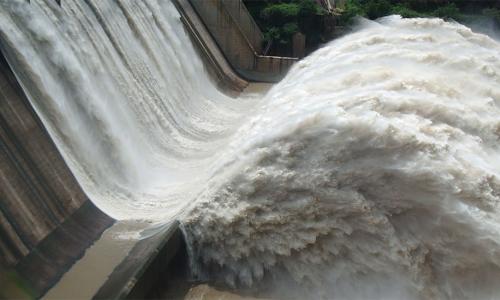Hydrokinetic energy, which includes wave and tidal power, encompasses an array of energy technologies, many of which are still in the experimental stages or in the early stages of deployment.
While actual impacts of large-scale operations have not been observed, a range of potential impacts can be projected. For example, wave energy installations can require large expanses of ocean space, which could compete with other uses—such as fishing and shipping—and cause damage to marine life and habitats. Some tidal energy technologies are located at the mouths of ecologically-sensitive estuary systems, which could cause changes in hydrology and salinity that negatively impact animal and plant life.
In addition, while estimates for life-cycle global warming emissions for wave and tidal power are preliminary, published research suggests that they would be below 0.05 pounds of carbon dioxide equivalent per kilowatt-hour [1]. To put this into context, estimates of life-cycle global warming emissions for natural gas generated electricity are between 0.6 and 2 pounds of carbon dioxide equivalent per kilowatt-hour and estimates for coal-generated electricity are 1.4 and 3.6 pounds of carbon dioxide equivalent per kilowatt-hour [2].
References:
[1,2] IPCC, 2011: IPCC Special Report on Renewable Energy Sources and Climate Change Mitigation. Prepared by Working Group III of the Intergovernmental Panel on Climate Change [O. Edenhofer, R. Pichs-Madruga, Y. Sokona, K. Seyboth, P. Matschoss, S. Kadner, T. Zwickel, P. Eickemeier, G. Hansen, S. Schlömer, C. von Stechow (eds)]. Cambridge University Press, Cambridge, United Kingdom and New York, NY, USA, 1075 pp. (Chapter 6 & 9).




